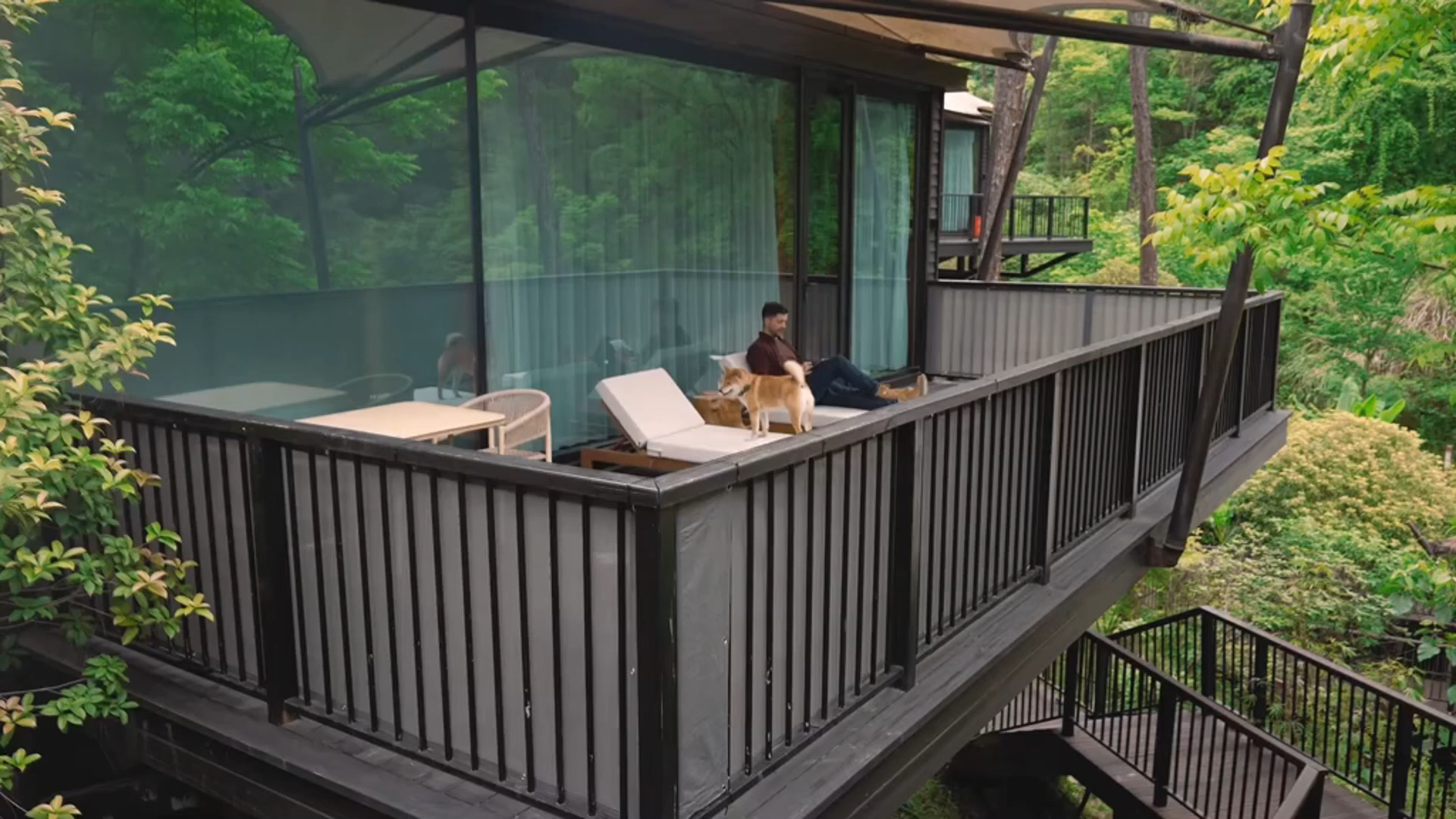
Due to the fast pace of modern life and increasing pressures and responsibilities, individuals require relaxation and more involvement in related programs. That's why hammocks, which can both relax the body and improve sleep, are becoming more and more popular. At the same time, the ancient practice of meditation as a form of mental relaxation is back in vogue.
In the pursuit of better meditation and a greater realization of the value of the hammock, the two have hit it off. Without a doubt, this is how hammock meditation was born.
So, does it really work or is it an exaggeration? Is hammock meditation really feasible?
Ancient and trendy, a scientific collaboration of practice and leisure
Inherent impressions are the source of letting conservative ideas, People's disapproval is just a derivative of inherent impressions. When picturing meditation, most individuals envision a monk seated on a futon or ground, positioned in a lotus or half-lotus pose, with their eyes shut and intently focusing on meditating. Although this is one aspect of meditation, it does not encompass the entirety of the concept.
whether hammock and meditation can be perfectly blended for greater effect, what is needed is objective knowledge, scientific theory, and verification.
Objective awareness. Meditation is an ancient practice aimed at quieting the mind, accepting nature, and achieving a calm and stable mental state. Hammocks, on the other hand, have evolved with the times; they are convenience items designed to make people more comfortable.
Scientific theory and validation. Research results show that during meditation, oxygen consumption decreases by an average of 10 to 20 percent over the first three minutes. During sleep, for example, oxygen consumption decreases by around 8 percent over four or five hours. For meditators who have practiced for years, breath rate can drop to three or four breaths per minute and brain waves slow from alpha waves seen in normal relaxation to much slower delta and theta waves. This shows that meditation reduces heart rate, oxygen consumption, and respiratory rate, which relaxes the body and improves sleep while reducing stress and anxiety. Research has also shown that hammocks soothe and maintain our sleep as opposed to fixed beds, as rocking accelerates the wake-sleep transition and promotes sleep consolidation.
Obviously, there is no conflict or overlap between the roles of hammocks and meditation, and their mutual cooperation allows us to improve the quality of our rest.
Applications of Hammock Meditation

Everything has to evolve with the times, and it is not uncommon to see a fusion of ancient concepts and new trendy products. There is already a akin precedent for hammock meditation. Yoga hammocks, for example, have allowed ancient yoga to blossom into a whole new dimension with the aid of a hammock.
The US National Center for Complementary and Integrative Health states that "Meditation is a mind and body practice that has a long history of use for increasing calmness and physical relaxation, improving psychological balance, coping with illness, and enhancing overall health and well-being." This is manifested in the form of stress reduction, anxiety reduction, and improved sleep. These are also the directions in which hammocks work.
1. Psychotherapy
Stress Reduction: Hammocks can create a stress-free environment. You can enhance relaxation by incorporating practices such as music meditation and breathing exercises.
Reduce Anxiety: Hammock meditation is a technique to alleviate anxiety through the rhythmic motion of the hammock swing. It can be a helpful tool before seeking a psychiatrist.
Relieving Mental Illness: Just as sailors on a ship use a hammock to combat seasickness, the hammock's constant stimulation of the vestibular system helps maintain balance. The rhythmic movement of the hammock swing provides both protection and therapy. As a result, the hammock can be an effective tool in the treatment of autism and phobia in children, as well as relieving depression in the elderly and younger individuals.
Improving sleep and reducing fatigue: According to an Oregon State University study, 10 minutes of meditation can replace up to 44 minutes of sleep. Sleep recharges your energy and helps you recover, while meditation removes the stress that causes your fatigue. It is highly recommended to take a midday nap in a hammock for faster recovery.
2. Physiological healing
Hammock meditation can also
- increase melatonin (sleep hormone)
- serotonin (a precursor to melatonin)
- lower heart rate
- lower blood pressure
- Activated brain functions can improve sleep patterns
Meditating for 5-10 minutes before bedtime can greatly improve sleep efficiency, and the hammock better protects your body in the process. The hammock also improves blood circulation and relieves symptoms such as back pain and lumbago.
How to meditate in a hammock?
We often need to be in a quiet and comfortable environment, away from mobile devices and things that can be distracting.
We also need to maintain a relaxed and stable posture, traditionally in lotus and half-lotus sits. It is also possible to lie down, to choose the position in which you are most comfortable but most upright, and then focus on your breathing.
Hammock meditation can be considered advanced meditation since it feels like you are floating in the air while meditating. In ancient times, many masters sat as high as possible to connect with nature, and some even sat directly on a rope coiled in mid-air. Most people don't reach this level, but it is a rare experience to mimic the behavior of the masters through a hammock and allow yourself to mingle with nature even further.
It also matters what medium you sit on。 yoga hammocks are too dangerous for beginners, and whole pieces of fabric that are too soft like a yoga hammock may distract you. Beginners are better off with a hammock with hammock bar structure, Examples include hammocks with polyester netting, built-in beechwood straight spreader bars, and comfortable mattresses. which is eco-friendly, odor-free, and reminiscent of a futon in a Buddhist temple or a seat in a sanctuary, ideal for meditation. Best of all, it's firm enough for support but not too stiff, perfect for achieving a meditative state.
You can also just adopt lying on the mesh hammock to meditate, it makes you less likely to doze off and experience the feeling of lying in the air.

Summarize
Meditation has been shown through numerous scientific studies to significantly reduce stress, anxiety, depression, and pain while enhancing calmness, perception, self-concept, and overall well-being. Hammocks provide sensory input that can enhance one's sense of balance, protect the body, and promote comfortable sleep. Practicing hammock meditation can further aid in creating a peaceful living space, improving mental health, and increasing mental vitality.
Make a fresh attempt, hammock meditation will change your world and open the door to advanced meditation. It's like Columbus discovering the New World.



